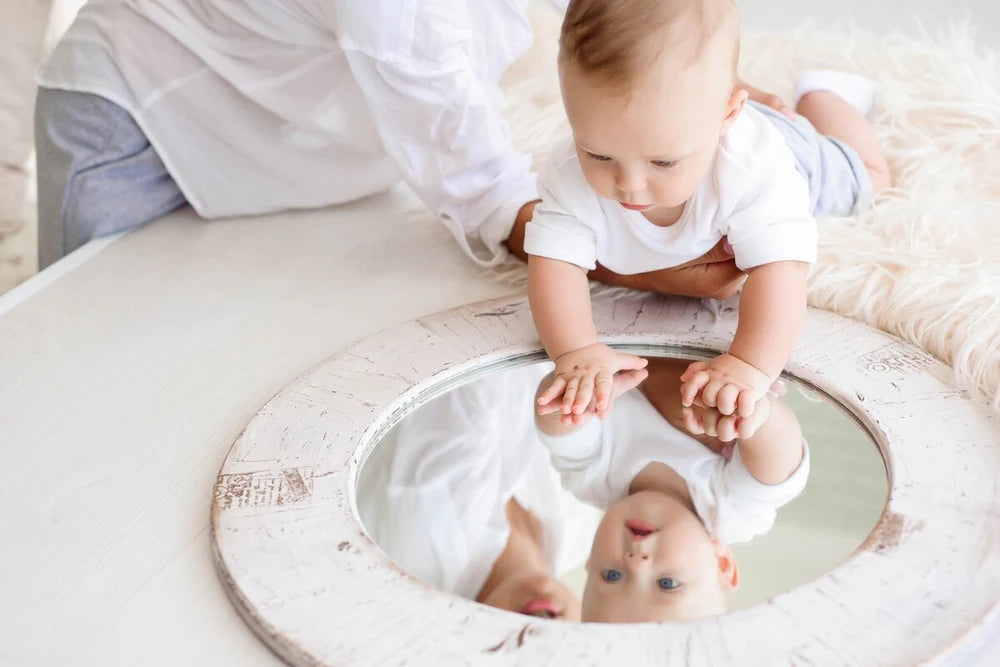
The Importance of Mirror Play for Babies and Toddlers
Share
Have you ever noticed how babies just love gazing at themselves in the mirror? No, they’re not worried about how their hair looks or if there’s food stuck in their teeth. Right from birth and up to 24 months, looking in the mirror is pure playtime. It’s fun, fascinating, and a delightful way for them to understand the world around them.
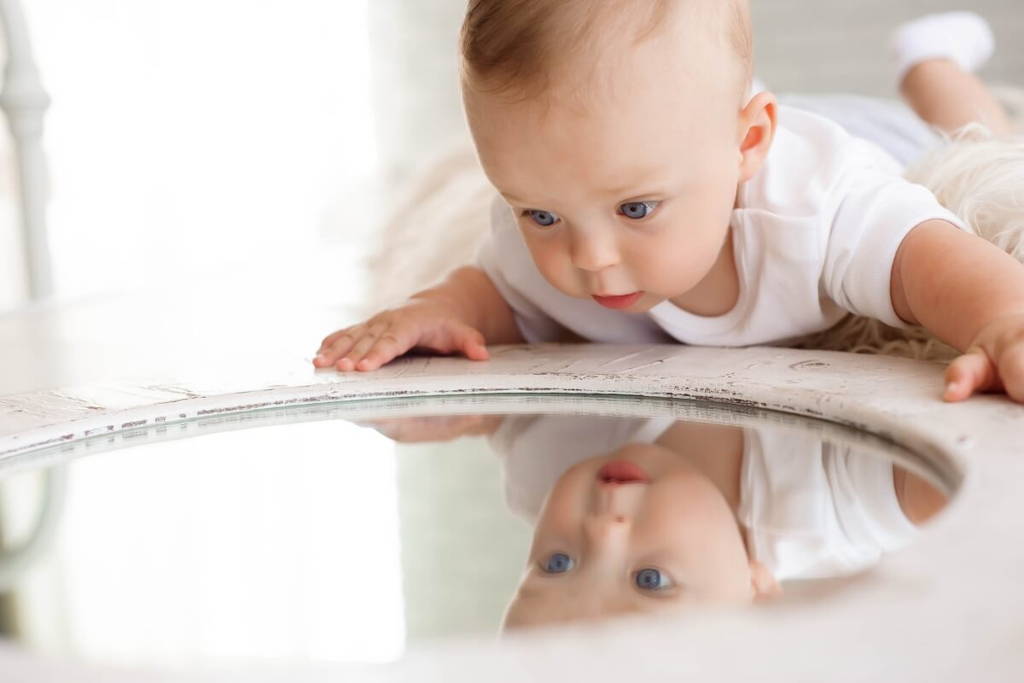
But it’s not just about the baby’s amusement; mirror play is also great for development in all sorts of ways. Even the Montessori method of teaching tells us that mirror play is crucial for developing spatial awareness, fine and gross motor skills, and even social skills.
They learn to track movements and even recognize facial expressions, both theirs and others. All of this happens through simple, joyful play, which makes mirrors a part of the brain-development toys for 1 year olds.
Understanding Mirror Play
Mirror play is an engaging activity where babies and toddlers can explore their reflections. This helps them learn about themselves and their place in the world. When your little one gazes into the mirror, it’s actually a chance for them to connect with their own image.
As they look into the mirror, they start to develop self-awareness, which is an essential part of early growth. They may discover new things about themselves, like adorable little wrinkles on their faces or the way their hair moves when they wiggle!
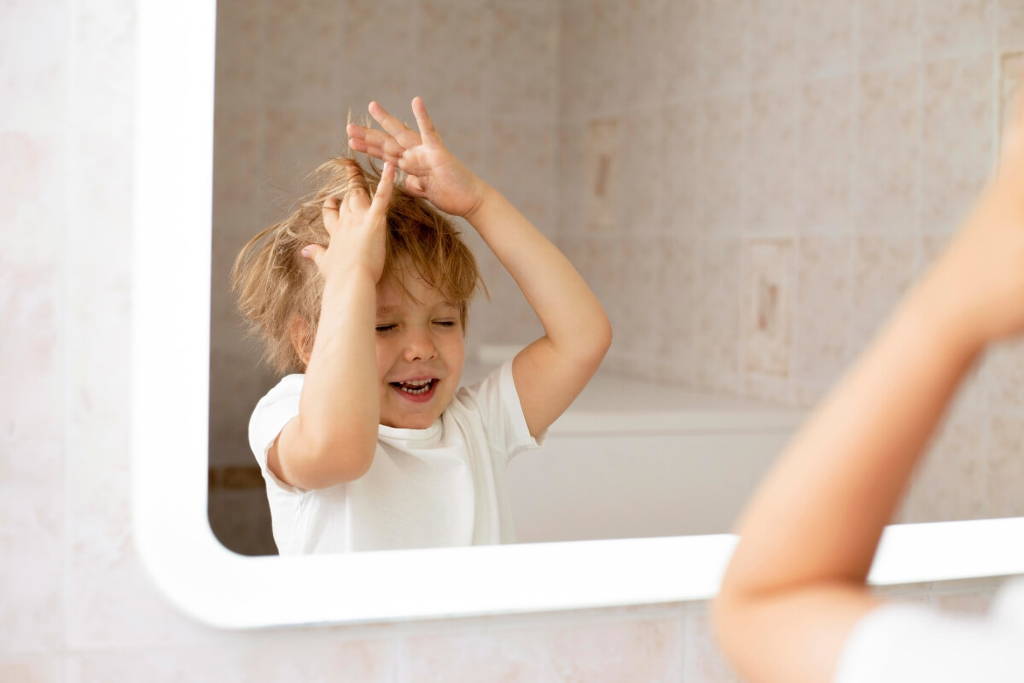
Mirror play also encourages children to notice the world around them. By seeing their reflections and the objects in their environment from different angles, they begin to make connections and observations that they might not have seen otherwise.
Cognitive and Emotional Benefits of Mirrors
Mirror play offers many cognitive and emotional benefits for babies, helping them grow and develop in important ways. Here are some of those benefits:
- Object permanence: Babies learn that things still exist even when they can't see them firsthand. When they look in the mirror, they realize the reflection is their own face.
- Spatial awareness: As babies reach for their reflection, they develop better movement coordination and understand how their actions relate to what they see.
- Visual tracking: Watching their movements in the mirror helps babies practice following with their eyes, which is important for developing hand-eye coordination.
- Social interaction: Babies engage in “conversations” with their reflections, creating a sense of companionship and learning to connect with others.
- Expression recognition: By observing their own faces, babies begin to recognize different emotions, helping them understand feelings in themselves and others.
-
Building confidence: Smiling at their reflection boosts babies’ confidence, allowing them to feel happy and proud of who they are.
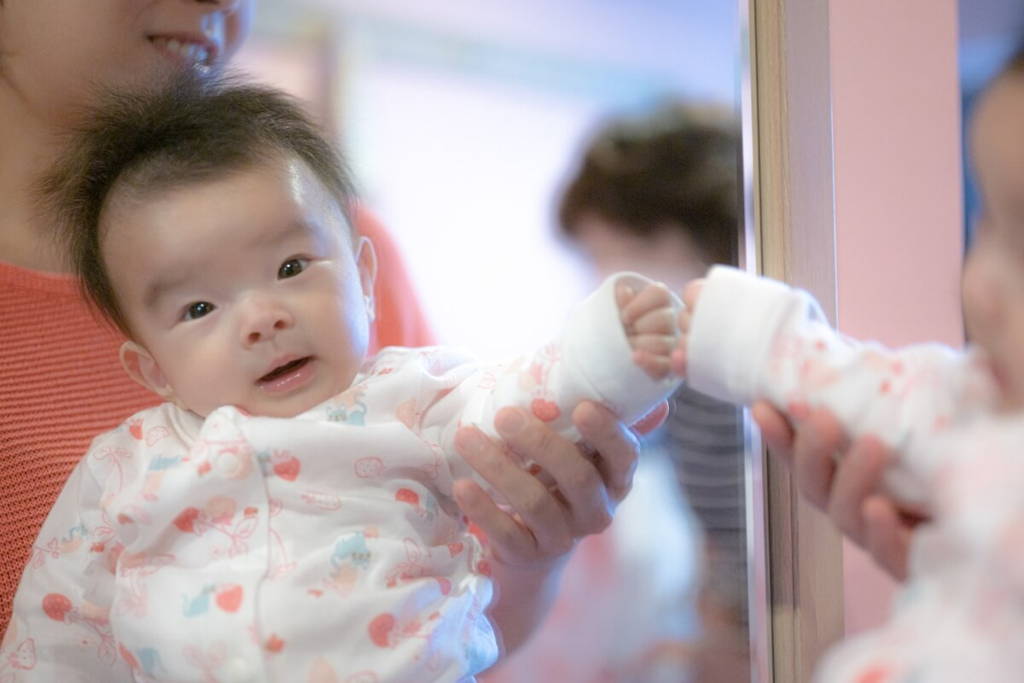
How is Physical Development related to Mirror play?
Mirrors spark curiosity and motivate little ones to learn and practice new skills. They play a supportive role in physical development, too. Mirror play encourages babies to move around and try new things in front of a mirror and see what’s going to happen.
- Tummy time: Tummy time can be a real struggle, especially when your little one protests like they’ve been sentenced to belly-down time-out! But a mirror can turn that frown upside down. Position a safe mirror in front of your baby, and watch as they lift their head in curiosity, gazing at the “other baby” staring back.
-
Fine motor skills: Mirrors are great motivators for tiny hands. They inspire babies to reach, pat, and point, turning them into little explorers. Playing with a hand-held mirror allows them to practice those fine motor skills as they grab and maneuver it to catch different views.
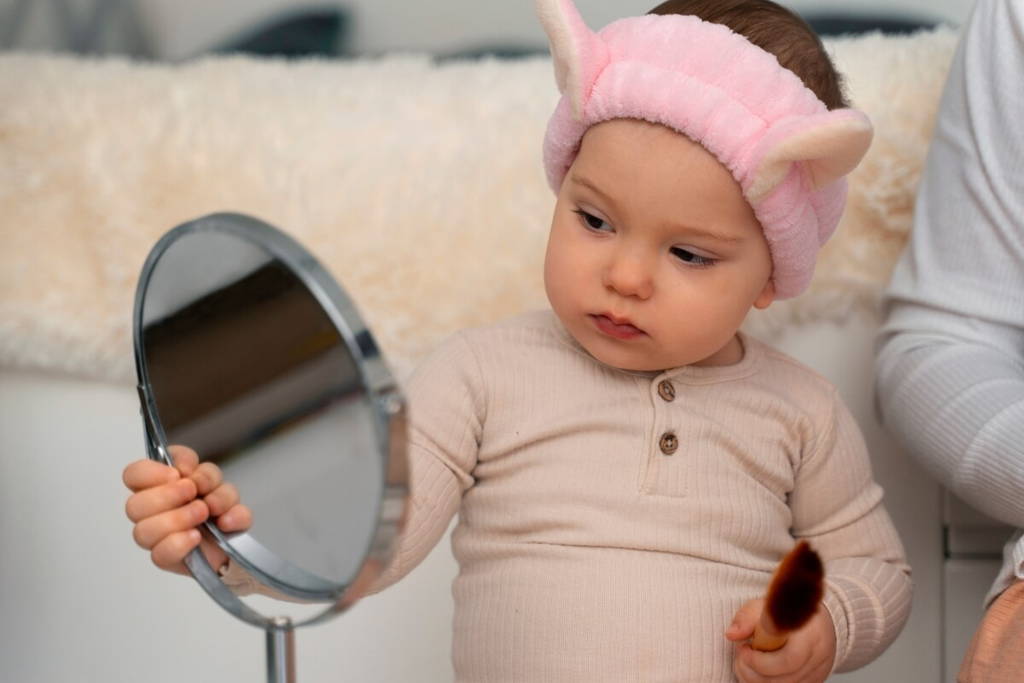
- Hand-eye coordination: All that reaching, patting, and pointing is a workout for your baby’s hand-eye coordination. They learn to sync what they see in the mirror with their own movements, becoming true masters of their own reflections.
- Gross motor movement: Want your baby to roll, sit up, crawl, or stand? Just place a mirror nearby, and it’s like turning on a magnet! Those little ones will be motivated to reach their reflection. Who knew a simple mirror could inspire such movement?
And guess what? Mirror play fits perfectly into this philosophy.
When it comes to mirror play, the Montessori principles of independence and exploration shine the most. Mirrors provide a unique way for babies and toddlers to interact with themselves and their surroundings.
They encourage little ones to explore their reflections, experiment with movements, and even pretend play.

Mirror-Play Activities - The Montessori Style
There are some fantastic Montessori activities that incorporate mirrors.
For instance, mirror walls are often used in Montessori classrooms as they allow children to see themselves from different angles. These walls invite toddlers to engage in creative play. So, no matter if it’s practicing dance moves or simply enjoying the joy of seeing themselves in action, mirrors are awesome additions to your little one’s playtime.
Floor mirrors are another popular option in Montessori settings, too. They provide a safe space for babies to practice tummy time, rolling over, and crawling while gazing at their reflections.

This setup not only supports physical development but also encourages babies to engage in self-study, helping them build self-awareness and confidence.
Practical Tips for Parents
Now, we all know that talking about mirror play is one thing, but actually making it possible requires a bit of preparation. However, incorporating mirror play at home can be simple and rewarding for both you and your little one.
Here are some practical tips to help you get started:
This setup not only supports physical development but also encourages babies to engage in self-study, helping them build self-awareness and confidence.

Conclusion:
Mirror play is more than just a fun pastime for babies and toddlers. It’s a valuable tool for their cognitive, emotional, and physical development. By adding mirror play to your daily routines, you can encourage their independence, spark their curiosity, and enjoy special moments together.
So, grab a mirror, get ready for some laughs, and let your little one discover the joy of seeing their own reflection. For anything else about the Montessori method of learning, we kindheartedly invite you to check out our other blog posts.
